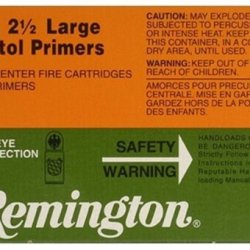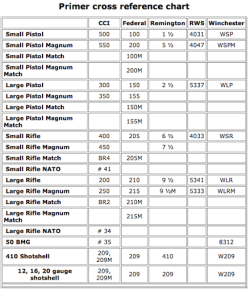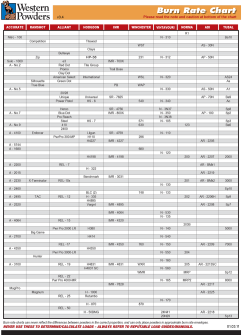I recently received a full complement of reloading gear (RCBS Rock Chucker) at no cost to me. it is basically brand new though it is about 50 years old.
My question is what does it mean when looking at a large pistol Primer box and it says #2-1/2 ? I have seen small primer boxes say Like CCI say #500 box of 1000. I do know its a box of a 1000 primers. Please keep in mind I know absolutely nothing about reloading. I'm trying to get all the essentials, Pwdr, bullets and necessary components together 1st. I will be loading 45, 44 special and magnum 38/357 as well as 9mm ect.
I have all the dies for these calibers. I've mainly asked only a few people about loading and such. Just thought I would ask here to get some insight on this.
Please move if in wrong location for this question.
THANKS
Cities
My question is what does it mean when looking at a large pistol Primer box and it says #2-1/2 ? I have seen small primer boxes say Like CCI say #500 box of 1000. I do know its a box of a 1000 primers. Please keep in mind I know absolutely nothing about reloading. I'm trying to get all the essentials, Pwdr, bullets and necessary components together 1st. I will be loading 45, 44 special and magnum 38/357 as well as 9mm ect.
I have all the dies for these calibers. I've mainly asked only a few people about loading and such. Just thought I would ask here to get some insight on this.
Please move if in wrong location for this question.
THANKS
Cities

![20250615_111418[1].jpg](https://cdn.smith-wessonforum.com/attachments/645/645572-fdf34d02ffbca2869c66febe1cff6224.jpg?hash=Vn3UCGRZ8m)


